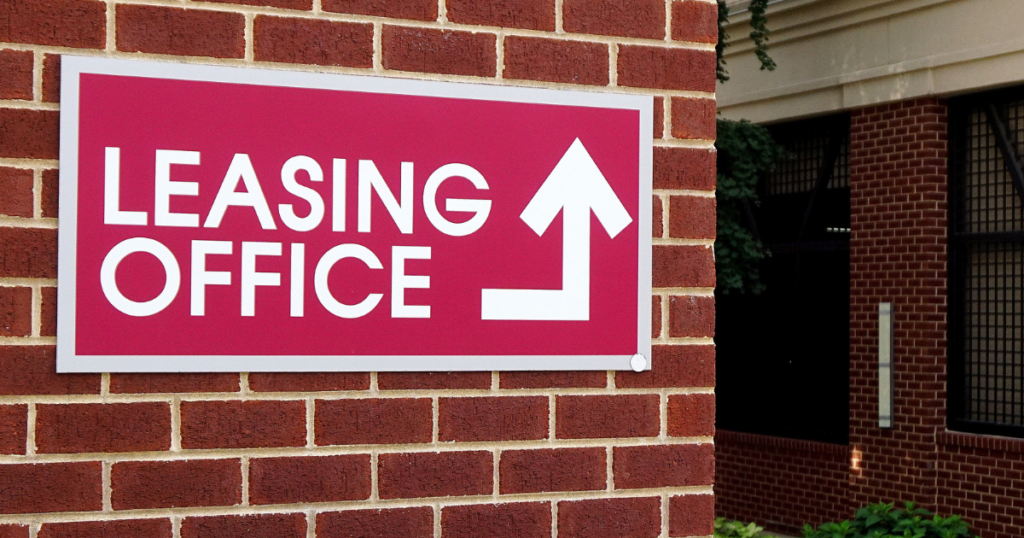In the fast-paced world of commercial real estate, the landscape of office lease stability is encountering a significant shift. The evolving demands of tenants, coupled with an increasing inclination towards flexible lease structures, present a complex web of challenges for landlords and property managers alike. As the dynamics of office space requirements continue to transform, the need for strategic adaptation becomes paramount. Amidst this backdrop of change, a deeper exploration into the nuances of lease stability reveals a multifaceted terrain that demands a proactive approach and innovative solutions to navigate successfully.
Market Competition and Lease Terms
Amidst escalating market competition, landlords are compelled to offer increasingly favorable lease terms to attract tenants seeking flexible arrangements and rent abatement within competitive commercial real estate landscapes.
In response to tenant demands and the need to stand out in a crowded market, lease concessions, rent abatement, and flexible lease structures have become common strategies employed by landlords. The pressure on landlords to adjust lease terms is further exacerbated by increased vacancy rates and shifting tenant preferences.
As tenants drive the market conditions, negotiations for shorter lease terms and increased flexibility have become prevalent, challenging landlords to adapt swiftly to meet these demands.
In navigating this environment, landlords must strike a delicate balance between offering attractive lease terms to secure tenants while also ensuring the stability and profitability of their investments amidst the evolving dynamics of the commercial real estate market.
Equity Assessment for Landlords
Effective evaluation of landlord equity is essential for gauging financial stability and making informed decisions in the commercial real estate market. When evaluating equity, landlords must consider various factors such as property appreciation, debt levels, and prevailing market conditions.
Here are key points to understand about equity assessment for landlords:
- Evaluation of Ownership Stake: Landlord equity evaluation involves determining the value of the landlord’s ownership interest in the property.
- Financial Standing: Understanding the equity position enables landlords to comprehend their financial standing and potential for future investments.
- Impact of Market Conditions: Market conditions, including rental trends and demand fluctuations, play a significant role in influencing landlord equity.
- Informed Decision-Making: Landlords utilize equity evaluation to make informed decisions regarding property management, leasing strategies, and financing options in the competitive office lease market.
Debt Stack Analysis for Landlords
Evaluation of landlord equity lays the foundation for understanding financial stability, and shifting to debt stack analysis provides landlords with insight into the levels of debt impacting their financial standing.
Debt stack analysis in the context of office leasing involves a detailed assessment of the different layers of debt tied to a property, influencing a landlord’s overall financial health. By thoroughly understanding the hierarchy of debt within the property’s capital structure, landlords can effectively manage their cash flow and debt obligations.
This analysis also enables landlords to evaluate how various debt instruments, such as mortgages and mezzanine loans, influence their financial position. Additionally, conducting a debt stack analysis empowers landlords to determine their leverage, assess their risk exposure, and strategize to navigate through challenging economic environments.
Utilizing the insights gained from debt stack analysis, landlords can make informed decisions regarding lease negotiations, property enhancements, and financial planning to maintain stability amidst the complexities of the office leasing market.
SNDA Security for Investment Protection
How does SNDA security play a critical role in safeguarding investments in commercial real estate?
SNDA (Subordination, Non-Disturbance, and Attornment) agreements are essential tools in protecting investments and ensuring lease stability in the dynamic landscape of office leases.
Here are four key points highlighting the significance of SNDA agreements for investment protection in commercial real estate:
- Continuity: SNDA agreements guarantee that lease obligations will persist even in scenarios of landlord default, providing reassurance to tenants and safeguarding their rights.
- Tenant Protection: These agreements shield tenants from disruptions in their lease terms during landlord changes or property foreclosures, enhancing lease stability.
- Risk Mitigation: Investors utilize SNDA agreements to mitigate risks associated with property ownership and uphold consistent income flows from leased properties.
- Transaction Vitality: SNDA agreements are crucial components in commercial real estate transactions, establishing a framework that ensures tenant protection, lender priority, and landlord responsibilities, thereby fortifying lease stability and investment security.
Negotiating Rent Abatement for Tenants
Amidst evolving economic landscapes, negotiating rent abatement has become a pivotal aspect of lease agreements for tenants seeking financial relief during challenging times. With the onset of government-mandated closures impacting businesses, tenants are increasingly turning to rent abatement negotiations to alleviate financial strains. These negotiations often involve temporary reductions or deferrals in lease payments, providing tenants with breathing room during times of economic uncertainty.
In such negotiations, tenants aim to secure favorable rent abatement clauses to navigate through periods of financial instability. Landlords, on the other hand, may consider offering rent abatement as an incentive for lease renewals or extensions, balancing the needs of tenants with the sustainability of their own investments.
Achieving a mutually beneficial agreement requires careful consideration of both tenant requirements and landlord considerations, emphasizing the importance of open communication and transparent negotiations in maintaining lease stability for both parties.
Maintaining Tenant-Landlord Relationships
Sustaining harmonious interactions between tenants and landlords is foundational to fostering lease stability and operational continuity in the office leasing landscape. Effective communication and collaboration between these parties are crucial for overcoming challenges and ensuring mutual success.
To maintain strong tenant-landlord relationships, consider the following key strategies:
- Open Communication: Establish transparent lines of communication to address concerns promptly and foster trust.
- Flexibility in Lease Terms: Be willing to negotiate and adapt lease terms to meet the evolving needs of tenants.
- Empathy and Understanding: Recognize the challenges faced by tenants and work together to find mutually beneficial solutions.
- Proactive Conflict Resolution: Address conflicts or disputes promptly and professionally to prevent escalation and maintain a positive working relationship.
Understanding Community Insights
Understanding community insights is essential for shaping beneficial lease terms and fostering successful tenant-landlord relationships in the competitive office leasing landscape. In the dynamic office market, where demand for office space fluctuates, having a deep understanding of community dynamics is pivotal for effective lease negotiations.
By tapping into community insights, landlords and tenants can align lease terms with local preferences and market trends, ultimately enhancing the sustainability of the leasing agreement. Factors such as rent abatement and lease flexibility can be tailored to meet the specific needs of the community, supporting small business growth and overall economic development.
Additionally, leveraging community insights can help landlords create attractive lease packages that not only meet tenant requirements but also contribute to a positive landlord-tenant relationship. Incorporating community insights into lease negotiations is a strategic approach to maneuvering through the complexities of the modern office leasing landscape.
Adapting to Market Dynamics
Understanding the evolving commercial real estate landscape requires adeptly adapting to market dynamics impacting office leasing strategies. As office landlords and tenants navigate through the challenges posed by market fluctuations, it becomes essential to stay flexible and responsive to the changing environment.
Here are some key points to keep in mind:
- Rising Vacancy Rates: Office spaces are experiencing an increase in vacancy rates, prompting landlords to devise innovative leasing strategies to attract tenants.
- Uncertain Leasing Demand: Fluctuations in leasing demand require landlords to remain agile in adjusting lease terms to meet the evolving needs of tenants.
- Shift Towards Flexibility: Market dynamics are steering towards shorter lease commitments and increased flexibility in lease agreements to accommodate changing business requirements.
- Technology Integration: Implementing advanced technology solutions is becoming vital to provide adaptable workspace options that align with tenant preferences and market trends.
Adapting to these market dynamics is essential for both landlords and tenants to thrive in a rapidly changing commercial real estate landscape.
Navigating Lease Stability Challenges
In response to the evolving commercial real estate landscape and the challenges posed by market dynamics, managing lease stability in office spaces requires a strategic approach focused on adaptability and customization. Office lease stability is currently facing challenges stemming from uncertainties in future office needs and the evolving work environments, necessitating a shift away from long-term leases towards more adaptable solutions. Companies are increasingly seeking flexibility and customization in their leases to implement cost optimization strategies effectively. Additionally, advanced technology integration plays a crucial role in attracting tenants and ensuring lease stability in the competitive market. Property managers must prioritize agility and customization to successfully navigate the complexities of office lease stability.
| Challenges in Office Lease Stability |
|---|
| Uncertainties in future office needs |
| Shift away from long-term leases for adaptability |
| Demand for flexibility and customization in leases |
| Importance of advanced technology integration |
Final Thoughts
To wrap up, the challenges in office lease stability require landlords and property managers to adapt to evolving market dynamics and tenant preferences.
One interesting statistic to note is that according to a recent survey, 67% of tenants prioritize flexibility in lease terms over long-term commitments, highlighting the shifting landscape of commercial real estate leasing.
By prioritizing agility, advanced technology integration, and maintaining strong tenant relationships, stakeholders can effectively navigate these challenges and guarantee lease stability in a competitive market environment.


